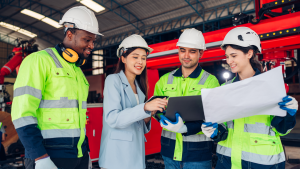1. Customer Satisfaction Level
The first indicator is the customer satisfaction level, reflecting even the purpose of ISO 9001: Focus on the customer. This index can be evaluated by qualitative and quantitative methods, with one of the most used by the market being the Net Promoter Score (NPS). The NPS is a tool that measures customers’ willingness to recommend a company to friends or partners based on a scale of 0 to 10.
The NPS is based on a simple question: On a scale of 0 to 10, where 0 is unlikely and 10 very likely, how likely are you to recommend our company to a friend?
- 0 – 6: detractors, probably speak ill of your brand/product/service.
- 7 – 8: neutrals, feel nothing for your brand/product/service.
- 9 – 10: promoters, speak highly of your brand/product/service.
A high NPS, exceeding 9, indicates a high level of customer satisfaction and loyalty, fundamental aspects for the success of any company.
2. Complaint Response Rate
An organization’s ability to respond promptly and effectively to complaints is another vital indicator. This metric measures not only response time but also the effectiveness of those responses. Good management of this indicator can help convert a negative customer experience into an opportunity to demonstrate a commitment to quality and continuous improvement.
Another important aspect of this indicator is to measure the number of complaints. A growing number of complaints may indicate an error in the management system, which will require a root cause analysis.
In addition, systems like “Reclame Aqui” allow complaints to be monitored and closed by the complainant, providing a transparent metric of the effectiveness of the company’s response.
3. Rework Rate
Finally, the rework rate is essential for measuring a company’s operational efficiency. Rework, or the need to repeat or correct a process, is an indicator of loss, whether in time, resources, or money. Monitoring this metric allows organizations to identify and correct inefficiencies in their processes. Implementing specific training, changing processes, or adopting error-proofing systems are some of the strategies to reduce rework.
Conclusion
These three indicators – customer satisfaction, complaint response, and rework rate – are fundamental to any quality management system, regardless of industry. They not only help ensure that the organization meets customer expectations but also contribute to the continuous improvement of internal processes.











